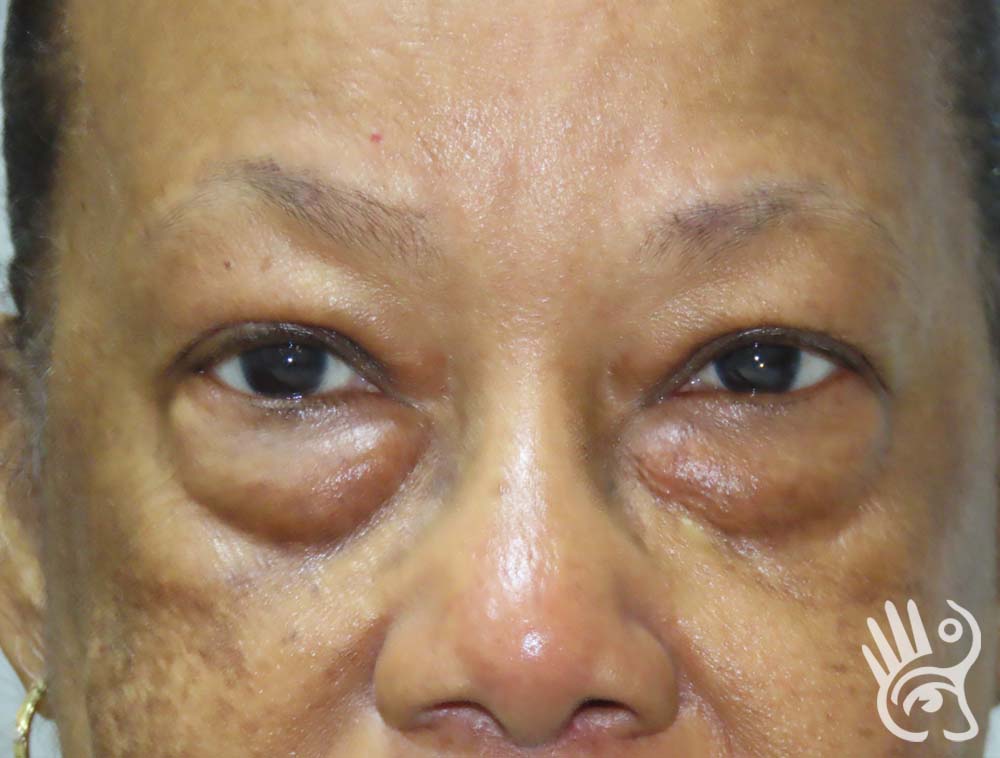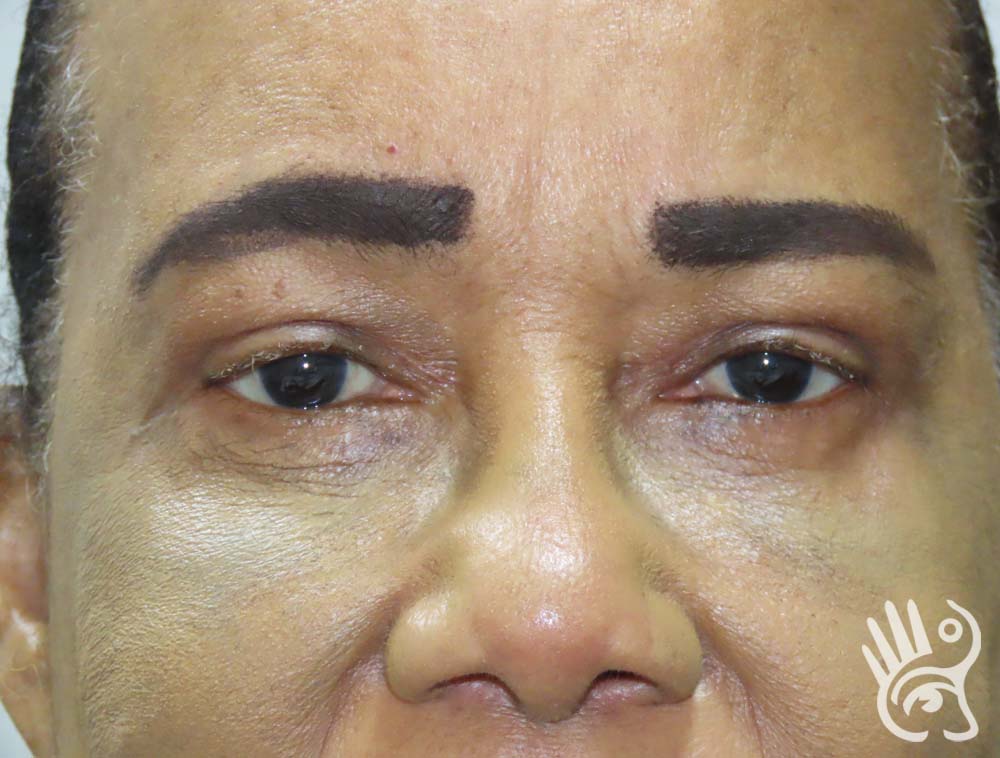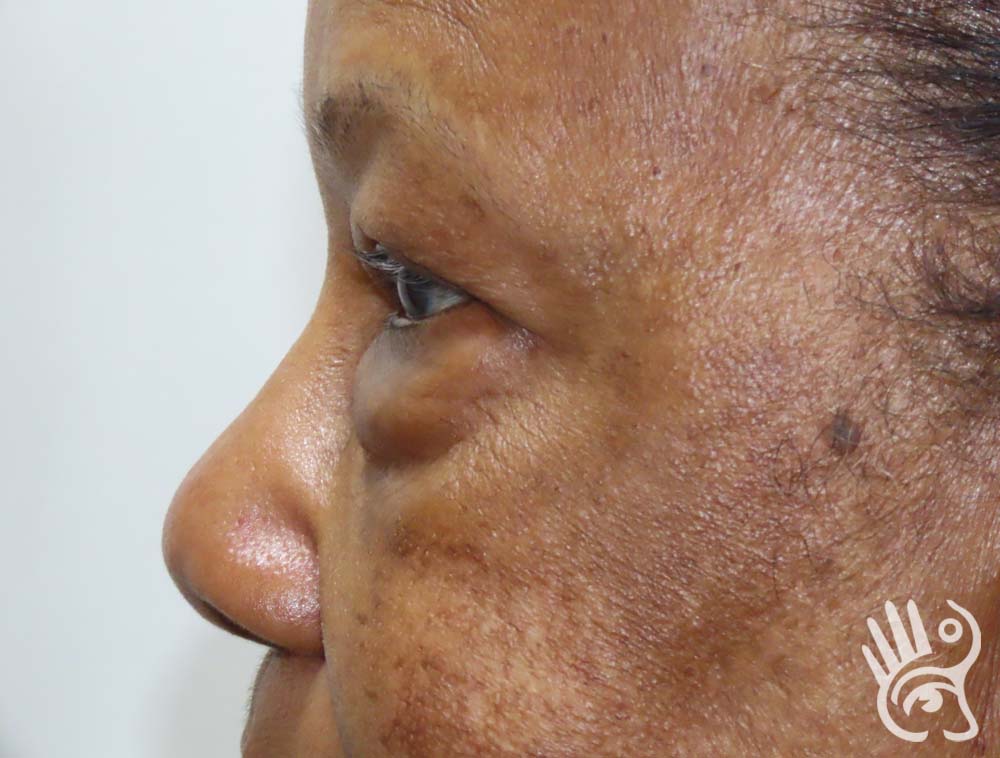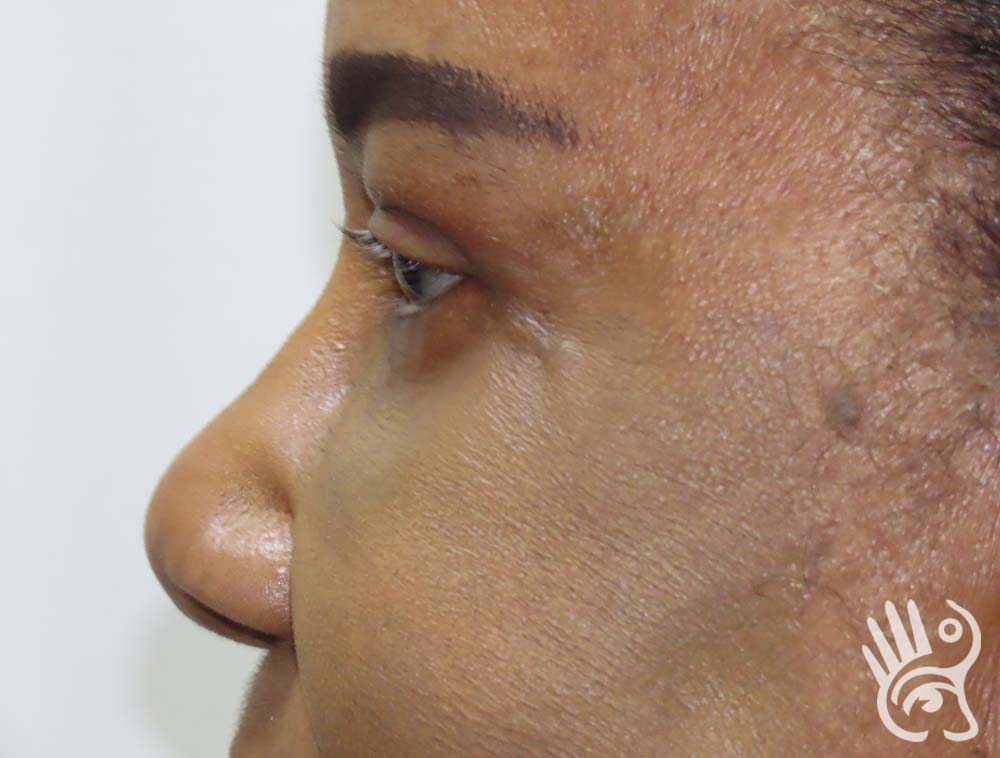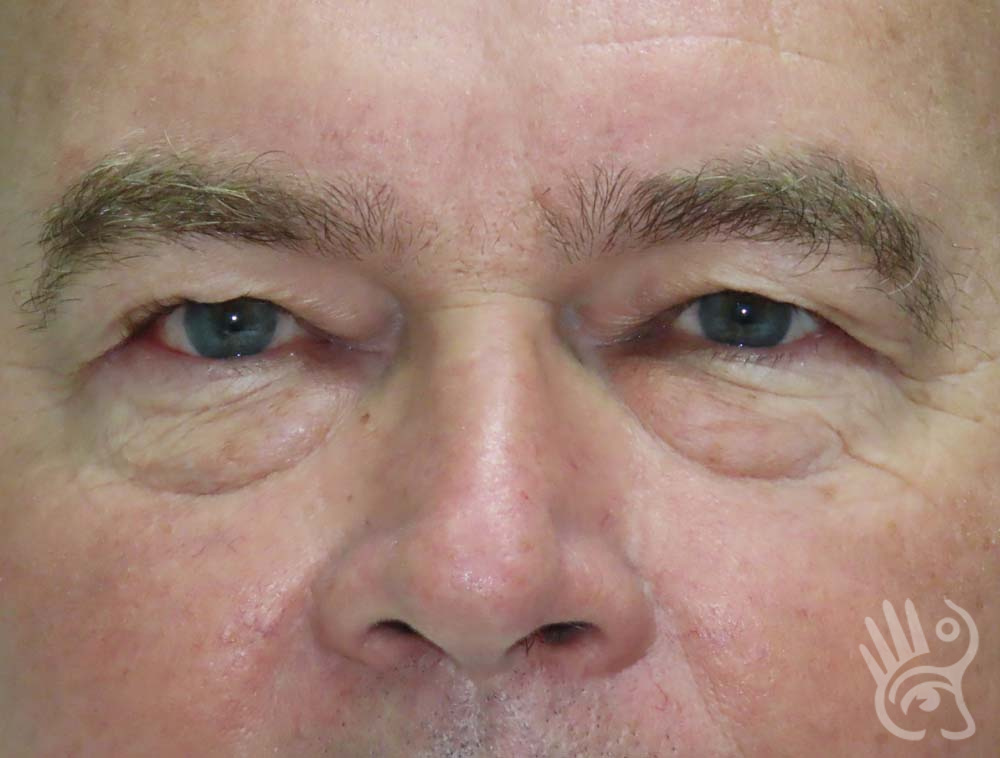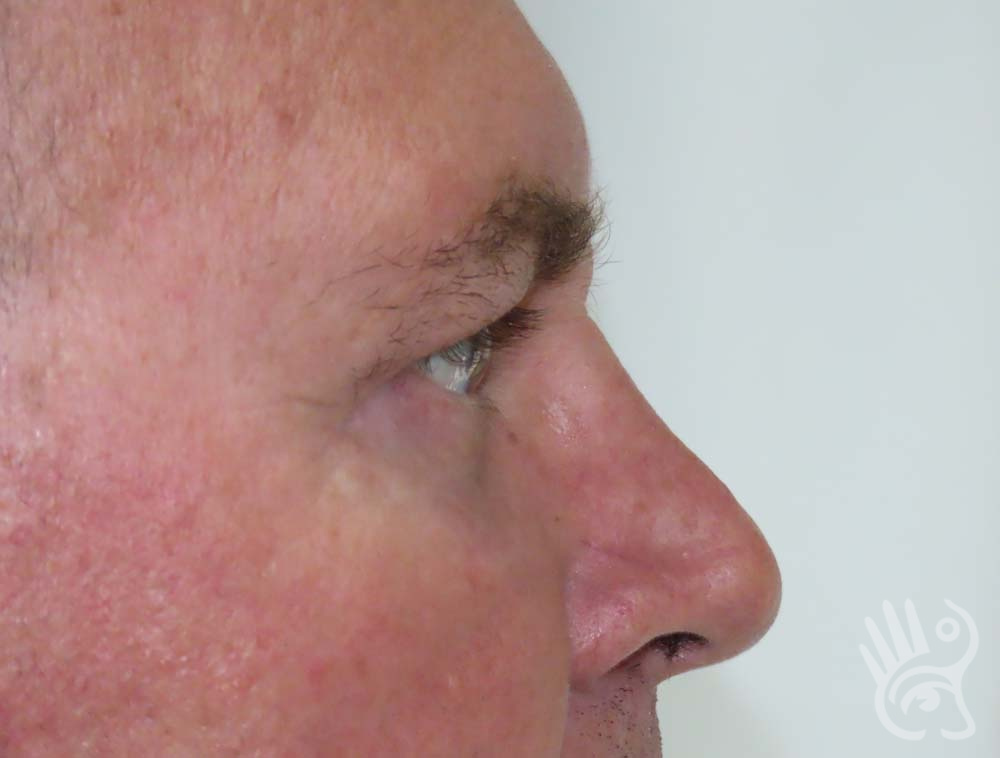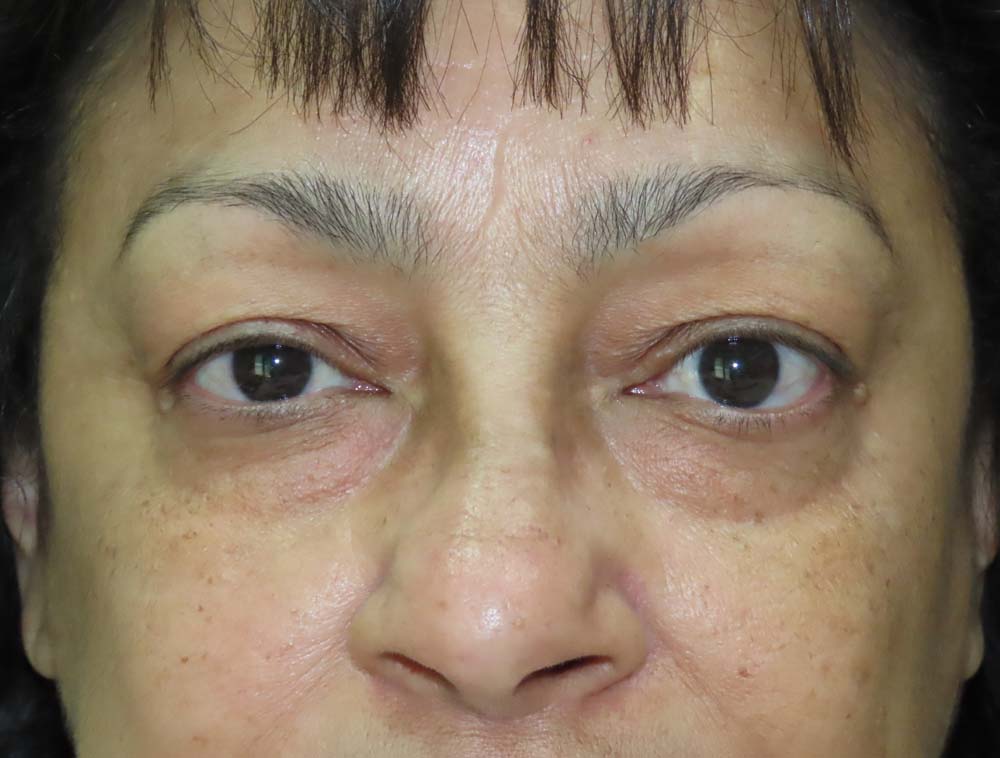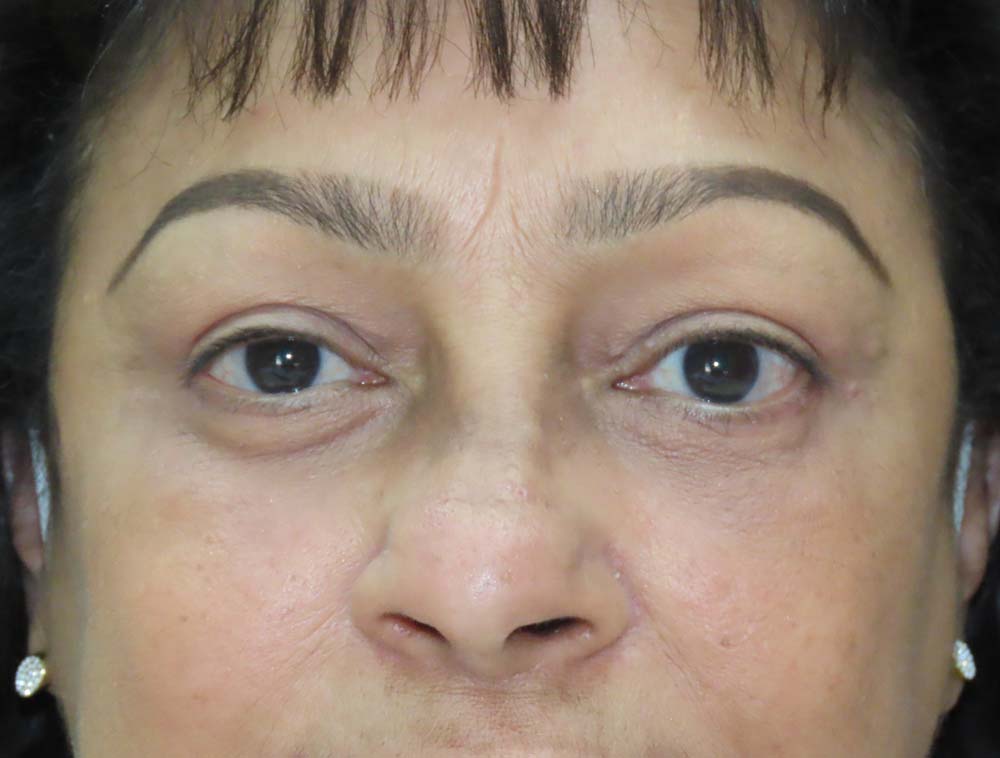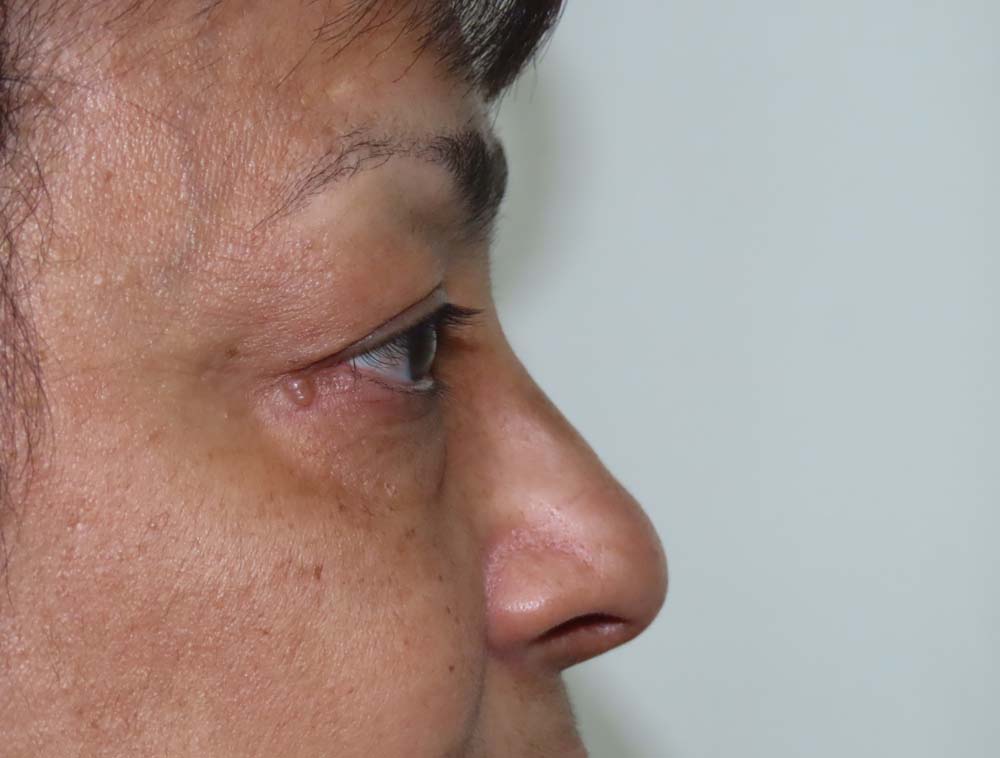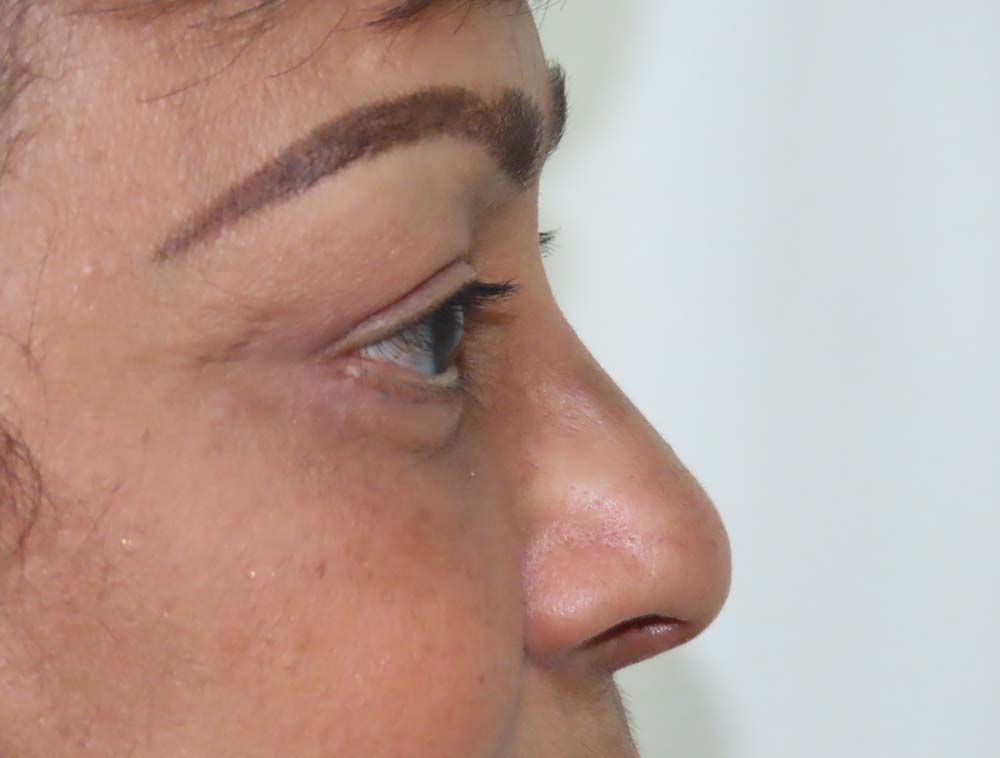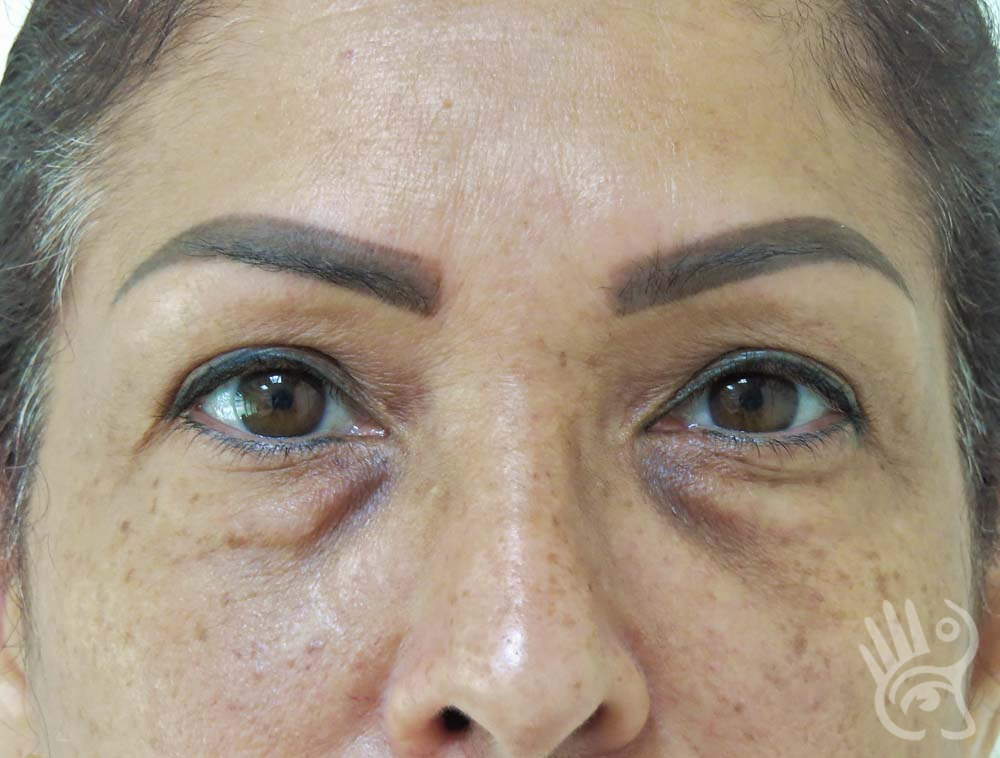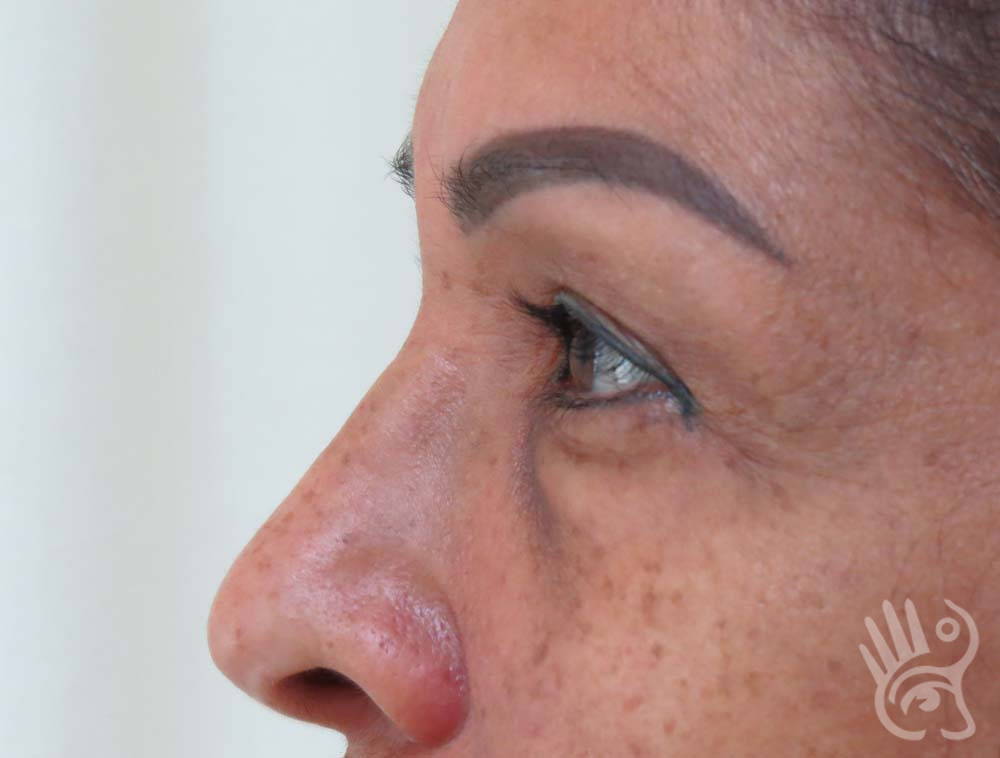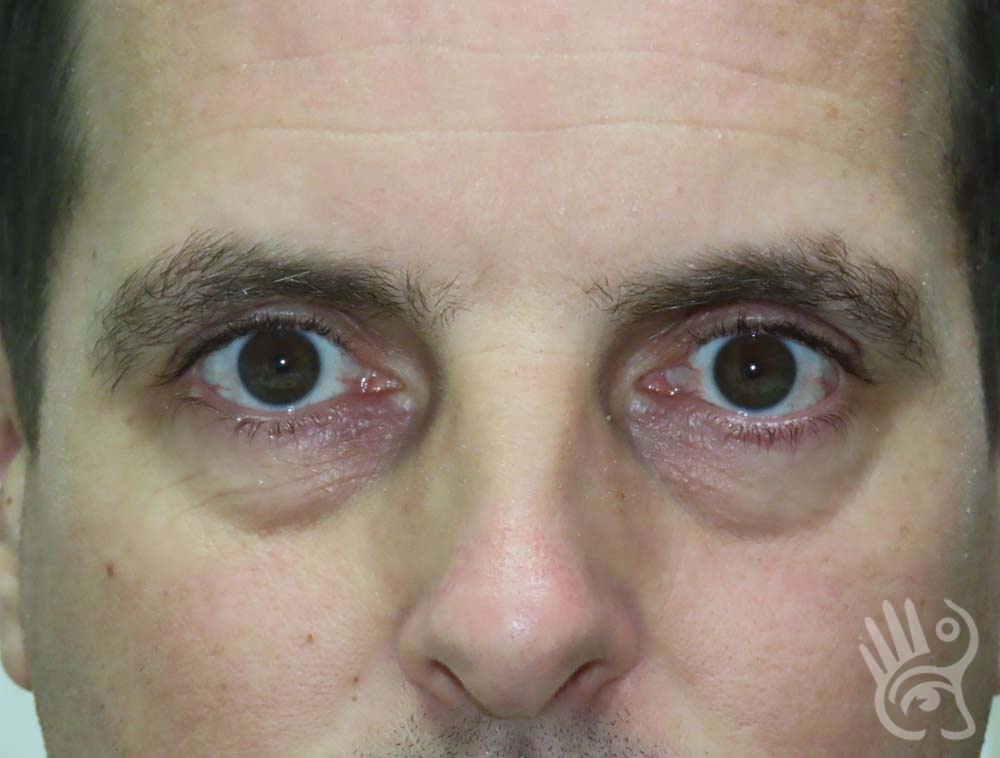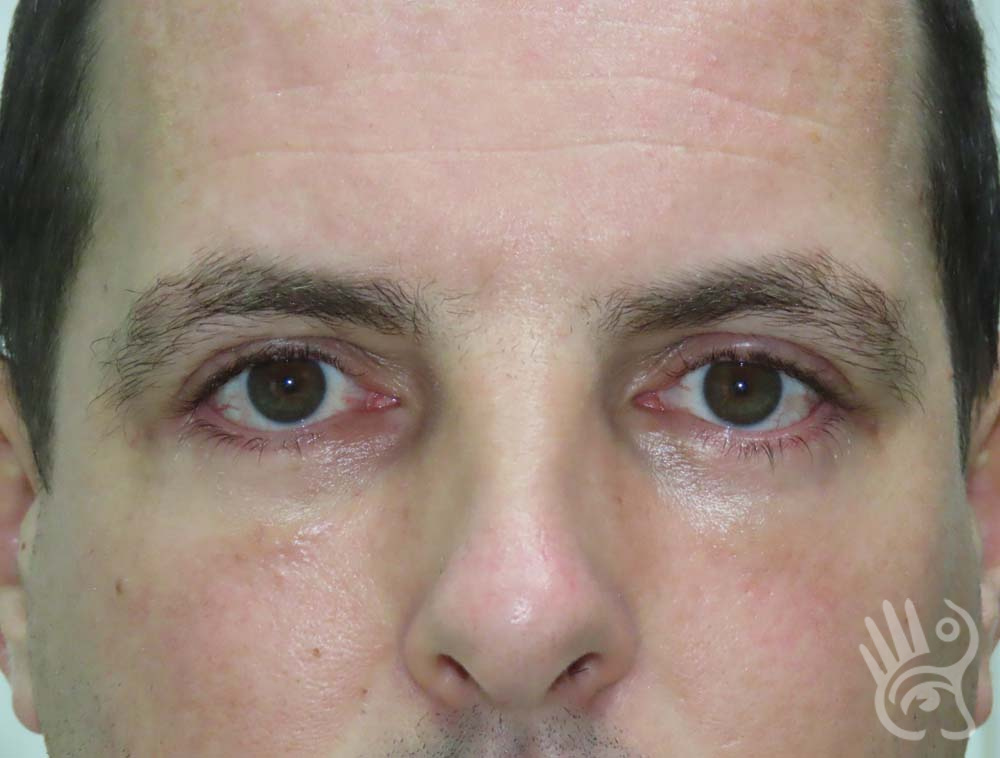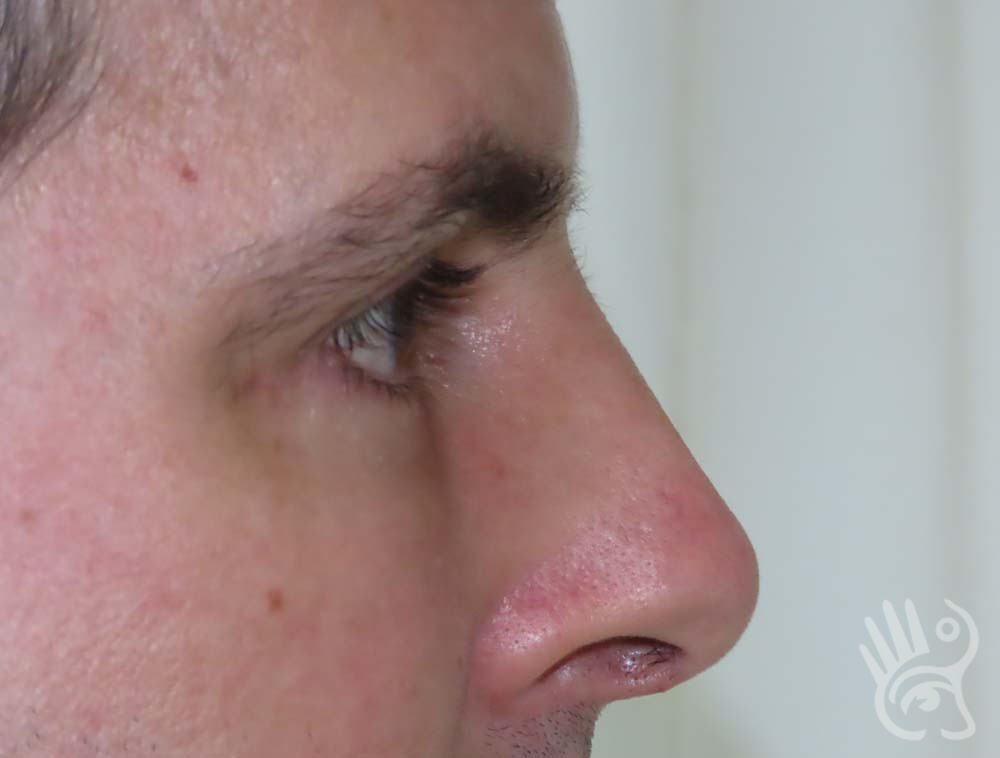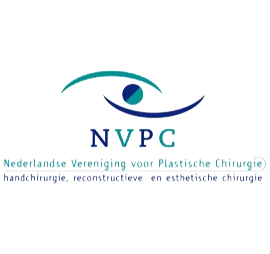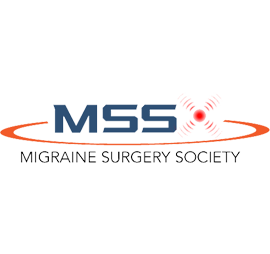Baggy lower eyelids are the result of the aging process whereby the skin muscle become less tight and the orbital fat start to protrude forward. The skin become wrinkled and the muscle can become so stretched that is forms large folds below the orbits (festoons). The tension on the lower eyelids can in elderly people become so weak that the eyelid moves down, turns outward and loses contact with the eye (ectropion) or turns inward and causing the eyelashes to touch the eye (entropion). In these situations there is a medical indication for a lower eyelid correction. Often at a younger age there may be too much fat bulging in the lower eyelids, making the person look tired and old. The correction of the lower eyelid with plastic surgery is called a lower blepharoplasty. Sometimes the swelling is due to fluid retention but this cannot be corrected with surgery. A lower eyelid correction is often performed together with an upper eyelid correction at the same time.
